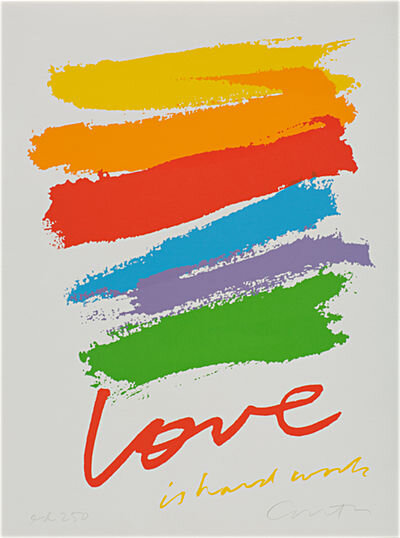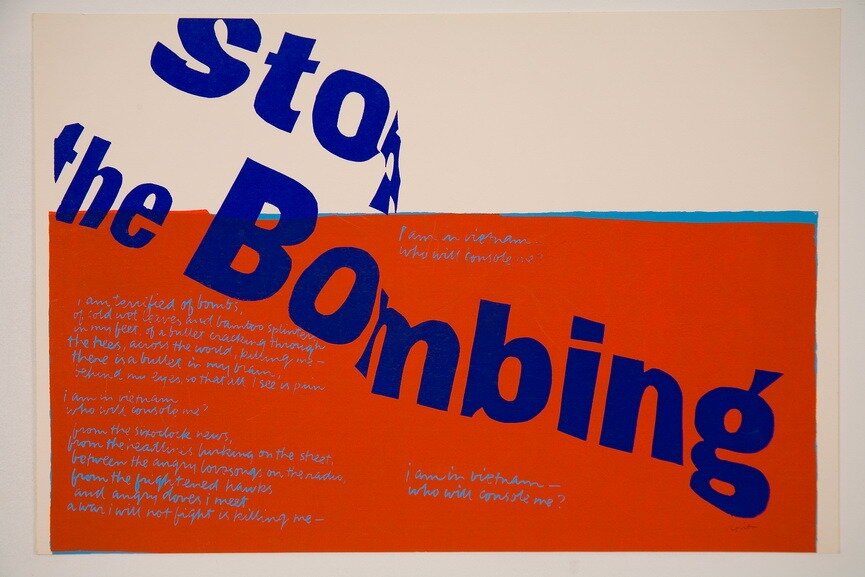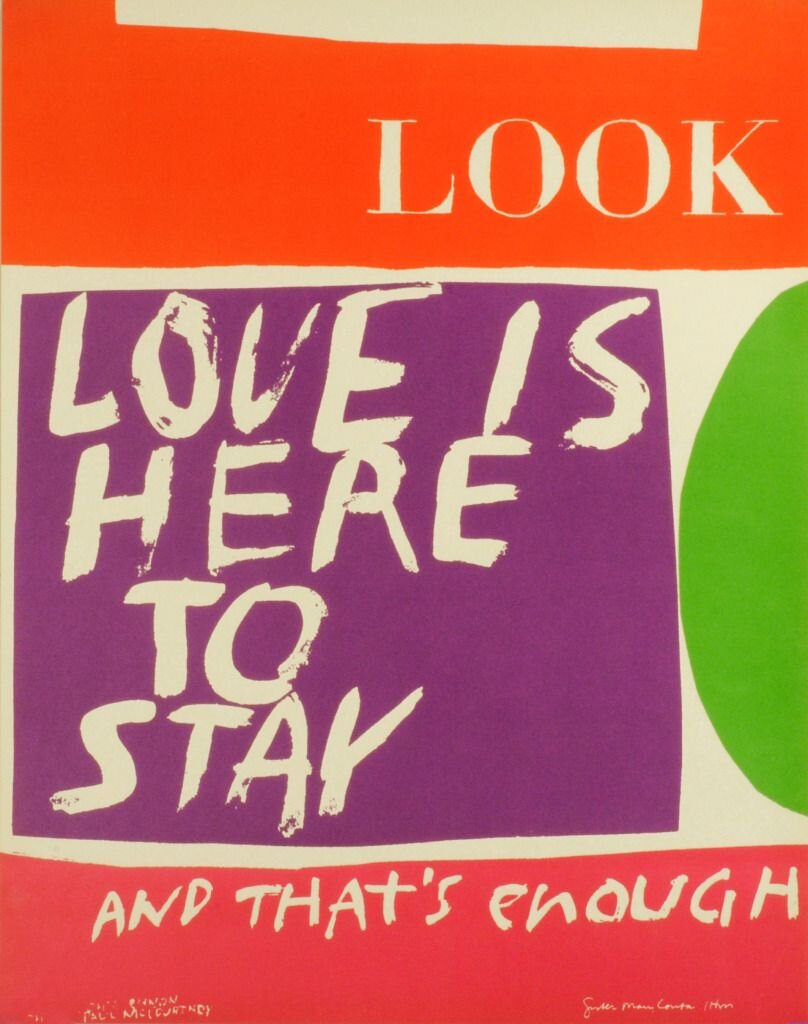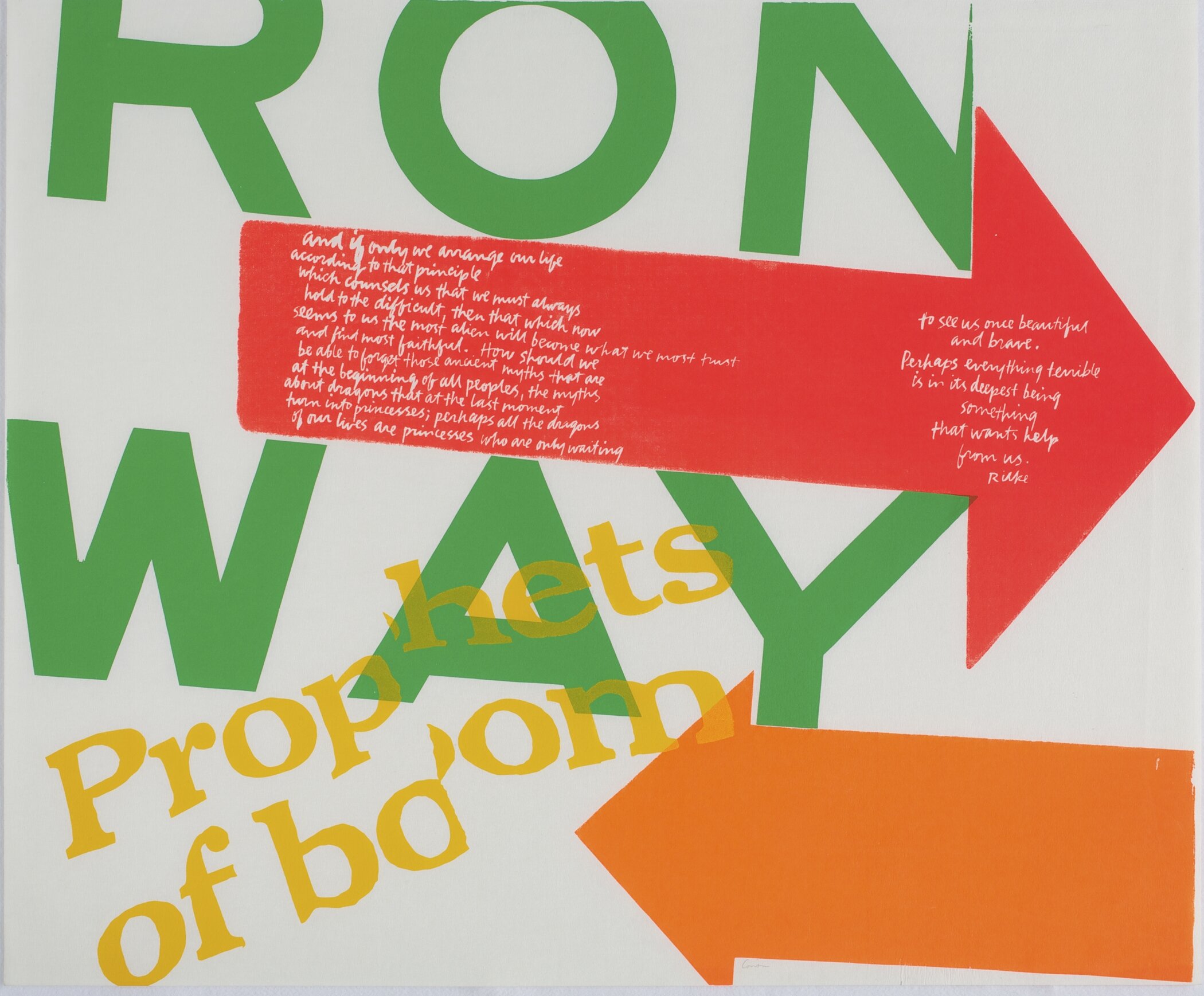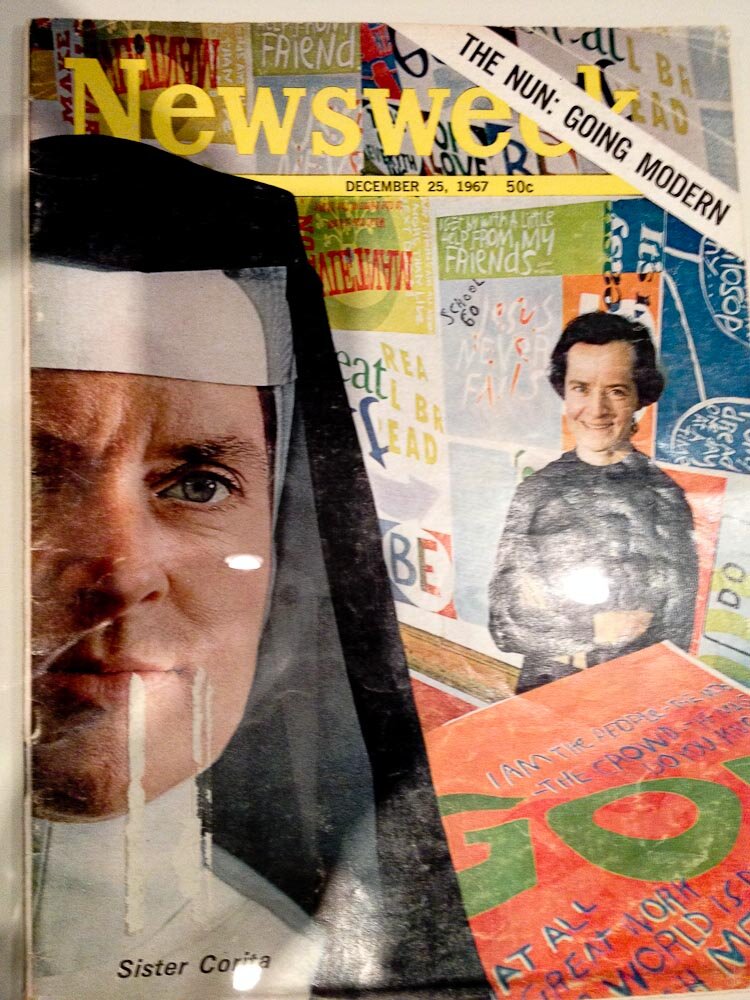THE NUN WHO WENT POP
SUMMER OF ‘62 — On a warm, smoggy July night in West Hollywood, actors and other avant-garde flock to the Ferus Gallery. The subject is soup, 32 “portraits” of Campbell’s, can by can. Critics scoff. “Frankly, the Cream of Asparagus does nothing for me,” one writes, “but the terrifying intensity of the Chicken Noodle gives me a real Zen feeling.”
But the show soon has a different visitor — a middle-aged nun in full habit. And in Andy Warhol’s soup cans, Sister Mary Corita sees the light. “Coming home,” she remembered, “you saw everything like Warhol.”
In the 1960s, nuns came out of the convent and into the culture. The Singing Nun made a hit record. Another asked how to “solve a problem like Maria.” Sister Bertrille even flew. But only one nun made cutting edge art.
Leaving behind the cubist Christs of her earlier work, Sister Mary Corita began silkscreening swashes and swirls. She juxtaposed blazing images with poems by Rilke or Blake. In posters laced with print, she protested war, championed love, and troubled the local Catholic diocese. On through the 1960s, the nun who went pop broke all the rules, then made her own.
Rule 1: Find a place you can trust, then trust it for awhile.
Raised in an Irish working class family, Frances Kent followed her older sister into the Immaculate Heart order in 1936. As her novitiate name, she added Mary, then chose Corita, Latin for “little heart.”
Though devoted to the church, Sister Mary Corita was equally devoted to art. After teaching on an Inuit reservation, she returned to Immaculate Heart College. Her students found her stern, but brilliant. “She changed the potentially stuffy classroom atmosphere into a cauldron of queries and assignments.”
Rule 4: Consider everything an experiment.
While earning a Master’s in Art at USC, she mastered silkcreen. “Printmaking is really democratic,” she explained. “It's something that can be done fairly quickly, and you're able to put out multiples in the world."
And the world noticed. In 1964, the Vatican hired Sister Mary Corita to decorate its pavilion at the New York World’s Fair. She soon did a Christmas storefront for IBM and began selling her prints in galleries. Pop, she said, was about more than soup cans. The modern blur of commerce demanded focus. “Words and life must be cared for,” she said. “If they are stolen for ugly uses or careless slang or false promotion work, they need to be brought back to their original meaning — back to their roots.”
Rule 6: Nothing is a mistake. There’s no win and no fail, there’s only make.
Like all Pop artists, she was intrigued by advertising. She made Wonder Bread’s dots into the body of Christ. She used General Mills’ “The Big G” as a symbol for God. But when she jazzed up a tomato, writing “Mary Mother is the juiciest tomato of them all,” cries of “blasphemy” rang out.
L.A.’s Archbishop James Cardinal MacIntyre demanded “that the activities of Sister Corita in religious art be confined to her classroom work.” In reply, the sister and her trusted college, already hosting free-thinkers like John Cage and Buckminster Fuller, plunged into the cauldron of Vietnam and Civil Rights.
In 1967, the year she wrote 10 Rules for Teachers and Students, she was on the cover of Newsweek. Her dazzling colors blazed with protest.
Awash in fame and controversy, she took a sabbatical, thinking she would return to the order in 1969. She never did. She kept her faith and the name Corita but for the first time in her adult life, she lived on her own, making a career in art.
Rule 7: The only rule is work. If you work it will lead to something.
As the Sixties faded, her work softened into messages of hope and love.
— “My love for you wears the ribbons of the world.”
— “Flowers grow out of dark moments.”
Her most visible work remains on view to millions. In 1971, the Boston Gas Company asked her to decorate an enormous storage tank. She painted rainbow colors on an 8-inch model. Twenty artists did the full-sized work, and the tank, the largest copyrighted artwork in the world, still decorates the drive in and out of Boston.
Then in her mid-fifties, cancer came. She survived one bout in 1974, another years later. “The Dark has its own light,” she silkscreened. As “nuclear winter” loomed, her billboard for Physicians for Social Responsibility proclaimed “We can create a world without war.”
In 1985, the US Postal service commissioned a stamp that sold 700 million. But cancer came again. Her final message, taken from organizer Dolores Huerta, preceded Barack Obama by decades.
Corita Kent died in 1986, leaving 800 prints, including works hung at MoMA, the Whitney, the Pompidou in France. . . In her will, she left all but a few to Immaculate Heart. Though its college closed in 1980, the order continues. At its heart is the Corita Art Center where students still study her rules.
Rule 9: Be happy whenever you can manage it. Enjoy yourself. It’s lighter than you think.



